|
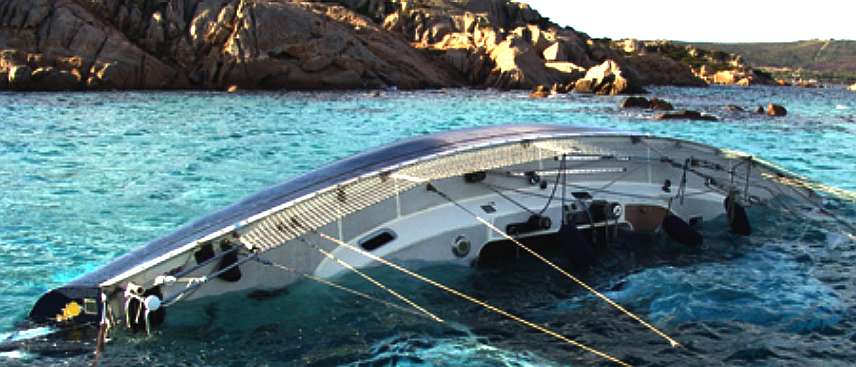
YACHT
INSURANCE ISSUES
The owner
of a yacht is liable for crew insurance
If there are paid crew onboard the yacht, the owner is liable for the well being of this crew. For British flagged yachts, including those within the red ensign group, it is compulsory to buy employer´s liability insurance with a minimum level of
GBP 5 million sum insured per crew member. This even applies to seasonal workers and/or deck hands. The question that often arises is “At what point is somebody considered to be employed?” A crew member does not always need to have a written employment contract to fall under the requirements for employer’s liability. To make things even more complicated the owner must also be aware that crew protection varies according to the nationality of the crew member. Therefore, it is very important to assess the risk properly and buy the right insurance, as well as the right level of insurance, when it comes to crew liability.
Watercraft
and boat insurance
Watercraft is a term that is used to generally describe fishing boats, runabouts, bowriders, cruisers, inflatables, deck boats, yachts, houseboats, pontoons, jet boats, personal watercraft. Special policies and endorsement are designed for boats and watercraft to insure that the proper coverage. There is little standardization of policies for watercraft and boat insurance. Companies have designed specific programs to provide this coverage consistent with their underwriting philosophy. Companies have homeowners endorsements available for certain watercraft that provides property and liability coverage. Also a Personal Watercraft Policy or a Boat and Yacht Policy is offered as a "stand alone" policy by some companies. We will attempt to provide information of a general nature and explain important coverages that are necessary for the boat
Property Coverage
Most boat owners are concerned that their investment in their watercraft is protected by property insurance. The coverage for the hull, motor and other equipment such as life protectors, oars and trailers can be covered under the property section of a
boat owners policy. The property section includes protection while the boat is being operated, when it is storage or when it is being pulled by a vehicle. The coverage in this section is very broad to provide the maximum protection. Theft, collision, storm damage, fire are some examples of coverage afforded by the property section of the
boat owners policy. This section of the policy includes a deductible (that portion of the loss paid by the insured). Higher deductibles offer credits to the policy which reduces the policy premium. Some boat policies can cover more than one watercraft. Many companies require separate policies for each watercraft.
Liability Coverage
Equally as important as property coverage for the boatowner is liability protection. Property damage and bodily injury caused by the operation of the boat can often exceed the amount of damage to the property damage in a boating accident. The injury to someone might be as minor as a slip and fall on the boat or as devastating as a fatal injury to a passenger. The liability section covers any operator of the boat that uses the boat with the owners permission. All activities (not excluded by the policy) are covered for bodily injury or property damage. An example of a liability exclusion is racing competition. Proper powerboat training and safety instruction are necessary a qualification for some policies. Safe boat operation programs are offered by many government entities such as state recreation boards and the
Coast Guard. All owners and operators are required to have such training for permits on many waterways in various states and on federal park lands.
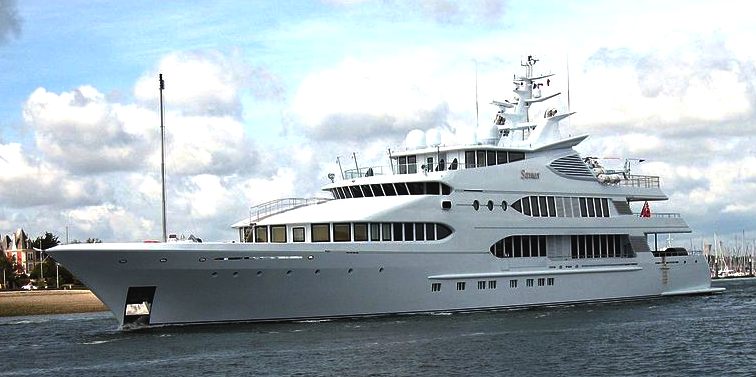
YACHT
DESCRIPTION
A
yacht is a recreational boat or
ship. The term originated from the Dutch Jacht meaning "hunt". It was originally defined as a light fast sailing vessel used by the Dutch navy to pursue pirates and other transgressors around and into the shallow waters of the Low Countries. After its selection by Charles II of England as the vessel to Britain from Holland for his restoration, it came to be used to mean a vessel used to convey important persons.
In modern use the term designates two rather different classes of watercraft, sailing and power boats. Yachts are different from working ships mainly by their leisure purpose, and it was not until the rise of the steamboat and other types of powerboat that sailing vessels in general came to be perceived as luxury, or recreational vessels. Later the term came to encompass motor boats for primarily private pleasure purposes as well.
Yacht lengths generally range from 10 metres (33 ft) up to dozens of metres (hundreds of feet). A luxury craft smaller than 12 metres (39 ft) is more commonly called a cabin cruiser or simply a cruiser. A mega yacht generally refers to any yacht (sail or power) above 30 m (98 ft) and a super yacht generally refers to any yacht over 50 metres (164 ft). This size is small in relation to typical cruise liners and oil tankers.
HISTORY OF YACHTS
Yacht (from Dutch/Low German jacht meaning hunting or hunt, compare Standard German/High German Jagd) was originally defined as a light, fast sailing vessel used by the Dutch navy to pursue pirates and other transgressors around and into the shallow waters of the Low Countries. They were also used for non-military governmental roles such as customs duties and delivering pilots to waiting ships. The latter use attracted the attention of wealthy Dutch merchants who began to build private yachts so they could be taken out to greet their returning ships. Soon wealthy individuals began to use their "jachts" for pleasure trips. By the start of the 17th century "jachts" came in two broad categories—speel-jachts for sport and oorlog-jachts for naval duties. By the middle of the century large "jacht" fleets were found around the Dutch coast and the Dutch states organised large 'reviews' of private and war yachts for special occasions, thus putting in place the groundwork for the modern sport of yachting. Jachts of this period varied greatly in size, from around 12 m (39 ft) in length to being equal to the lower classes of the ship of the line. All had a form of fore/aft gaff rig with a flat bottom and lee boards to allow operations in shallow waters. The gaff rig remained the principal rig found on small European yachts for centuries until giving way to the "Bermudan sloop" rig in the 1960s.
Charles II of England spent part of his time in exile during the period of the Commonwealth of England in the Netherlands and became keen on sailing. He returned to England in 1660 aboard a Dutch yacht. During his reign Charles commissioned 24
Royal Yachts on top of the two presented to him by Dutch states on his restoration. As the fashion for yachting spread throughout the English aristocracy, yacht races began to become common. Other rich individuals in Europe built yachts as the sport spread. Yachting therefore became a purely recreational form of sailing with no commercial or military function (see, for example, the Cox & King yachts at the beginning of the 20th Century), which still serves a broad definition of both the sport and of the vessel.
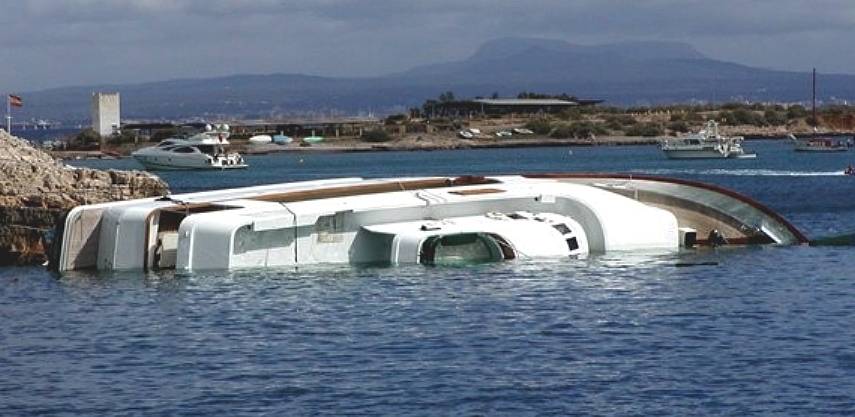
MOTOR YACHTS - Classification
Motor yachts generally fit into the following categories:
*
Day cruiser yacht (no cabin, sparse amenities)
* Weekender yacht (one or two basic cabins, basic galley appliances and plumbing)
* Cruising yacht (sufficient amenities to allow for living aboard for extended periods)
* Sport fishing yacht (yacht with living amenities and sporting fishing equipment)
* Luxury yacht (similar to the last three types of yachts, with more luxurious finishings/amenities)
Propulsion
Motor yachts typically have one or two internal combustion engines that burn diesel fuel or gasoline. Depending on engine size, fuel costs may make motor yachts more expensive to operate than sailing yachts.
Hull types
The shape of a motor yacht's hull may be based on displacement, planing, or in between. Although monohulls have long been the standard in motor yachts, multihulls are gaining in popularity
RACING YACHTS
Racing yachts try to reduce the wetted surface area, which creates drag, by keeping the hull light whilst having a deep and heavy bulb keel, allowing them to support a tall mast with a great sail area. Modern designs tend to have a very wide beam and a flat bottom aft, to provide buoyancy preventing an excessive heel angle and to promote surfing and planning. Speeds of up to 35
knots can be attained in extreme conditions. Dedicated offshore racing yachts sacrifice crew comfort for speed, having basic accommodation to reduce weight. Modern racing yachts may have twin rudders because of the wide stern. Since about 2000
water ballast transfer pumps have become more common as have transversely swinging keels. Both these stiffen the yacht and allow more sail to be carried in stronger winds. Depending on the type of race, such a yacht may have a crew of 15 or more. Very large inshore racing yachts may have a crew of 30. At the other extreme are "single handed" races, where one person alone must control the yacht.
Yacht races may be over a simple course of only a few miles, as in the harbour racing of the International One Design; long-distance, open-ocean races, like the Bermuda Race; or epic trans-global contests such as the Global Challenge,
Volvo Ocean Race, Clipper Round the World Race and Mini Transat 6.50.
Propulsion
The motive force being the wind, sailing is more economical and environmentally friendly than any other means of propulsion.[citation needed] A hybrid type of vessel is a motor sailing yacht that can use either sail or propulsion (or both) as conditions dictate.
Many "pure" sailing yachts are also equipped with a low-power internal-combustion engine for use in conditions of calm and when entering or leaving difficult anchorages. Vessels less than 7 metres (23 ft) in length generally carry a petrol outboard-motor of between 3.5 kilowatts (5 hp) and 30 kilowatts (40 hp). Larger vessels have in-board diesel engines of between 15 kilowatts (20 hp) and 75 kilowatts (101 hp) depending on size. In the common 7 metres (23 ft)-14 metres (46 ft) class, engines of 20 to 40 horsepower are the most common. Modern sailing yachts can be equipped with
electric inboard motors in order to reduce consumption of fossil fuel. The latest technology are outboard electric pod drives that can also regenerate electricity (motogens). These motogens can be made retractable to increase the efficiency of the yacht. Some of these yachts are extremely efficient and do not need additional
diesel generators. This technology is called Green Motion. Tests can be seen and read in the following magazines: Yachting Monthly, November 2010; the
German magazine Yacht, January 2011;the Water kampioen from the
Netherlands, May 2011 and in Voile magazine in December 2011 in France. The Mansura Trophy was awarded for this new propulsion system in May 2011.
Hull types
Monohull yachts are typically fitted with a fixed keel or a centreboard (adjustable keel) below the waterline to counterbalance the overturning force of wind on the vessel's sails.
Multihull yachts use two (catamarans) or three (trimarans) hulls widely separated from each other to provide a stable base that resists overturning.
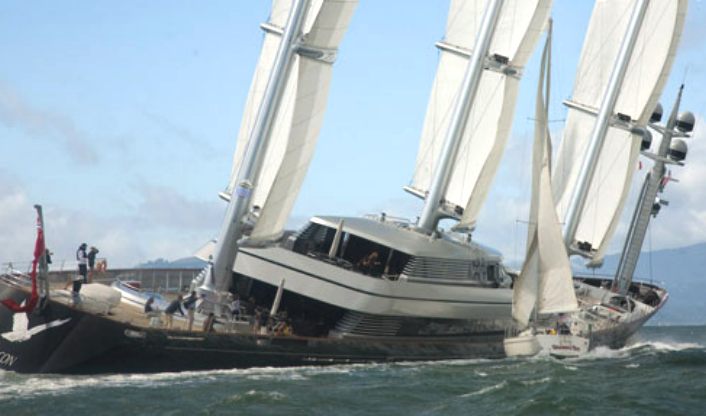
CRUISING YACHTS
Cruising yachts are by the far the most common yacht in private use, making up most of the 7 metres (23 ft)-14 metres (46 ft) range. These vessels can be quite complex in design, as they need a balance between docile handling qualities, interior space, good light-wind performance and on-board comfort. The huge range of such craft, from dozens of builders worldwide, makes it hard to give a single illustrative description. However, most favour a teardrop-planform hull, with a fine bow,a wide, flat bottom and deep single-fin keel with ample beam to give good stability. Most are single-masted Bermuda rigged sloops, with a single fore-sail of the jib or Genoa type and a single mainsail. Spinnaker sails, are often supplied for down-wind use. These types are often chosen as family vessels, especially those in the 26 to 40-feet (8 to 12 m) range. Such a vessel will usually have several cabins below deck. Typically there will be three double-berth cabins; a single large saloon with galley, seating and navigation equipment; and a "head" consisting of a toilet and shower-room. The interior is often finished in wood panelling, with plenty of storage space. Cruisers are quite capable of taking on long-range passages of many thousands of miles. Such boats have a cruising speed upwards of 6
knots. This basic design is typical of the standard types produced by the major yacht-builders.
Aside from this fairly standard design, built in numbers and using methods approaching mass production by the large yacht-building firms of Europe and North America, there are some common variations to suit a yacht for a more particular role or to emphasise one aspect of performance rather than the wide range of abilities needed in a standard design. The classic "long keel" yacht, where the keel is integrated into the lower portion of the hull and extends for all or most of the hull's length, rather than being a single fin attached to the hull at the centre, is still being built in small numbers. The long keel generally provides better directional stability, especially in rough weather, at the cost of greater weight, a narrower hull which decreases interior space, and poorer handling when under engine power or in tight conditions such as a marina.
Whilst the cutter rig with twin foresails was once the standard rig for most cruising yachts until the 1960s (when it began to be replaced by the two-sail sloop rig) it is now only commonly found on larger cruising yachts (usually around 15 m (49 ft) and over). Other rig variations are found on many different sizes of yacht such as the yawl, ketch, schooner and even unusual sail plans such as the junk rig.
A yacht may also be a "cruiser-racer", which as the name implies is a blend between the cruiser and racing variants. This is often a builder's existing design with changes to the rigging, sails, keel and controls to provide better performance. Some of the interior appointments may be reduced or removed to save weight.
The fixed fin keel is most commonly found on modern cruising yachts world wide but some are still built with twin 'bilge' keels or with lifting fin keels which retract into the yacht's hull. In both cases these allow the yacht to sit upright on the seabed in shallow water or on areas that dry at low tide.
Most large yachts, 16 m (52 ft) and up, are also cruisers, but their design varies greatly as they are often "one off" designs tailored to the specific needs of the buyer.
Luxury sailing yachts
These yachts are generally 25 metres (82 ft) or longer. In recent years, these yachts have evolved from fairly simple vessels with basic accommodation into sophisticated and luxurious boats. This is largely due to reduced hull-building costs brought about by the introduction of fibreglass hulls, and increased automation and "production line" techniques for yacht building, especially in Europe.
On the biggest, 130-feet-plus (40 m) luxury yachts, every modern convenience, from air conditioning to television, is found. Sailing yachts of this size are often highly automated with, for example, computer-controlled electric winches controlling the
sails. Such complexity requires dedicated power-generation systems. In recent years the amount of electric equipment used on yachts has increased greatly. Even 20 years ago, it was not common for a 25-feet (7 m) yacht to have electric lighting. Now all but the smallest, most basic yachts have electric lighting, radio, and
navigation aids such as Global Positioning
Systems. Yachts around 10 metres (33 ft) bring in comforts such as hot water, pressurised water systems, and refrigerators. Aids such as radar, echo-sounding and autopilot are common. This means that the auxiliary engine now also performs the vital function of powering an alternator to provide electrical power and to recharge the yacht's batteries. For yachts engaged on long-range cruising,
wind, water and solar-powered generators can perform the same function.

SAILING YACHTS
Sailing yachts can range in overall length (Length Over All—LOA) from about 6 metres (20 ft) to well over 30 metres (98 ft), where the distinction between a yacht and a ship becomes blurred. Most privately owned yachts fall in the range of about 7 metres (23 ft)-14 metres (46 ft); the cost of building and keeping a yacht rises quickly as length increases. In the
United States, sailors tend to refer to smaller yachts as sailboats, while referring to the general sport of sailing as yachting. Within the limited context of sailboat racing, a yacht is any sailing vessel taking part in a race, regardless of size.
Modern yachts have efficient sail-plans, most notably the Bermuda rig, that allow them to sail towards the wind. This capability is the result of a sail-plan and hull design.
Types - Day sailing yachts
Day sailing yachts are usually small, at under 6 metres (20 ft) in length. Sometimes called sailing dinghies, they often have a retractable keel, centreboard, or daggerboard. Most day sailing yachts do not have a cabin, as they are designed for hourly or daily use and not for overnight journeys. they may have a 'cuddy' cabin, where the front part of the hull has a raised solid roof to provide a place to store equipment or to offer shelter from wind or spray.
Weekender yachts
Weekender yachts are slightly larger, at under 9.5 metres (31 ft) in length. They may have twin keels or lifting keels such as in trailer sailers. This allows them to operate in shallow waters, and if needed "dry out"—become beached as the tide falls.This is important in the
UK waters where many moorings are in tidal creeks. The hull shape (or twin-keel layout) allows the boat to sit upright when there is no water. Such boats are designed to undertake short journeys, rarely lasting more than 2 or 3 days . In coastal areas, long trips may be undertaken in a series of short hops. Weekenders usually have only a simple cabin, often consisting of a single "saloon" with bedspace for two to four people. Clever use of ergonomics allows space in the saloon for a galley (kitchen), seating, and navigation equipment. There is limited space for stores of water and food. Most are single-masted "Bermuda sloops", with a single foresail of the jib or genoa type and a single mainsail . Some are gaff rigged. The smallest of this type, generally called pocket
yachts or pocket cruisers, and trailer sailers can be transported on special trailers.
CONSTRUCTION
Until the 1950s, almost all yachts were made of wood or steel, but a much wider range of materials is used today. Although wood hulls are still in production, the most common construction material is
fibreglass, followed by aluminium,
steel, carbon fibre, and ferrocement (rarer because of insurance difficulties). The use of
wood has changed and is no longer limited to traditional board-based methods, but also include modern products such as plywood, veneers, skinned balsa and epoxy resins. Wood is mostly used by hobbyists or wooden boat purists when building an individual boat. Apart from 'space-age' materials like carbon fibre and aramid fibre, spruce veneers laminated with epoxy resins have the best weight-to-strength ratio of all boatbuilding materials. Many classes of small racing dinghies can only be built in wood to conform to class rules.
YACHT ENSIGN
Some countries have a special flag worn by recreational boats or ships that indicates the nationality of the vessel. Although inspired in the National flag, the yacht ensign is not always corresponding with the civil or merchant ensign of the state in question. The US yacht ensign for example, has a circle of 13 stars and a fouled anchor in the canton instead of the 50 stars, being quite different from the Ensign of the US, which is the flag of the United States.
Yacht ensigns differ from merchant ensigns in order to signal that the yacht is not carrying cargo that requires a customs declaration. Carrying commercial cargo on a boat with a yacht ensign is deemed to be smuggling in many jurisdictions.
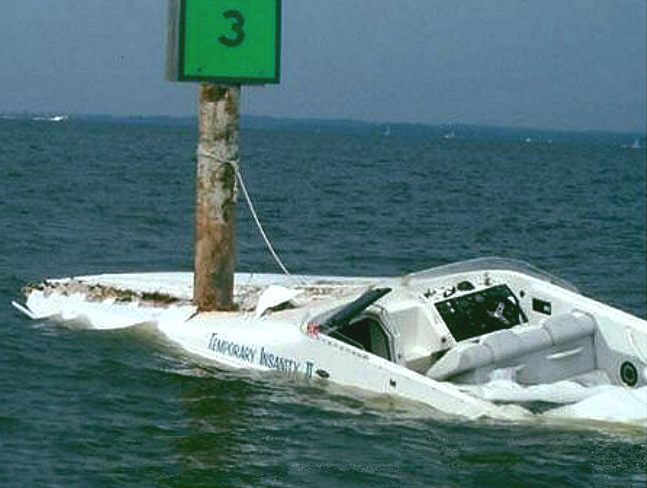
Marine
& Boat Insurance Providers Table
|
Company
|
Type
of Insurance
|
Website
|
|
24
hour dinghy insurance
|
Dinghy
& Sailboard Insurance Immediate insurance
premiums displayed by clicking onto the class
of craft.
|
24
hour dinghy insurance
|
|
ABG
|
We've
teamed up with Boatinsure.co.uk to provide our
clients with a competitive online marine
quote: DINGHY, SPEED BOAT, SMALL YACHT, CABIN
CRUISER.
|
ABG
|
|
Affinity
Insurance Brokers
|
Official
Brokers to the Irish Sailing Association.
Affinity Insurance Brokers, the premier source
for insurance coverage and risk management
advice for Ireland's sailing and fishing
communities.
|
Affinity
|
|
Amilcroft
|
Cargo
INSURANCE. Take advantage of capacity and
services through the London market and other
specialist insurers. Our arrangements include
insurers able to write surplus lines in most
of North America.
|
Amilcroft
|
|
Arden
Insurance
|
Arden
Insurance Services are able to arrange cover
on all craft from the smallest of dinghies to
the largest ocean going vessels. Discounts are
also available for: RYA Qualifications, Policy
excesses up to 1,000GBP, Craft in Marina
Berths, Craft with alarms. Many of our
standard policies include: Third Party
Liability up to 2,000,000GBP, 12 Months in
commission cover, Underwater Machinery Damage,
Protected No Claims Bonus, Road Transit Cover,
Legal Protection Cover.
|
Arden
Insurance
|
|
Edwards
& Associates
|
We
offer marine insurance to cover pleasure boats
such as yachts and cabin cruisers, as well as
larger private boats. Whether you are looking
for personal or commercial marine insurance,
we have a large base of insurers who we use to
make sure that you get the best possible deal:
Personal and Commercial Marine Insurance.
|
Edwards
& Associates
|
|
BC-Marine
Inurance
|
Set
the right course to solve your Marine
Insurance Requirements. Marine Craft
Insurance, Legal Protection, Foreign Travel,
Boat SalesAccident & Medical, Loss Of
Earnings, Marine Finance, Marine Tradesmen,
Crew Liability, Instalment Plans, Boat
Builders & Repairers, Public Liability,
Recovery & Assistance, Product Liability.
UK, Ireland, Scotland, Wales & the EU.
|
BC-Marine
Inurance
|
|
Bishops
|
We
have particular expertise in the following:
International Marine, Cargo, Inland Goods in
Transit, Hauliers Liability, Freight
Forwarders Liability.
|
Bishops
plc
|
|
Alfred
Blackmore
|
Alfred
Blackmore Group Ltd UK insurance broker
specialising in bloodstock, classic car,
construction, financial services, healthcare,
international motor, marine, professional
indemnity, reinsurance and special accident.
|
Alfred
Blackmore
|
|
Blythin
& Brown
|
Loughborough
brokers provide online quotes for marine
insurance, and also offer a full range of
financial advice.
|
Blythin
& Brown
|
|
Boatinsure
|
Marine
insurance underwritten by Lloyd's of London.
Discover what is covered by the policies, read
the FAQs, get an online quote or claim online.
|
Boatinsure
|
|
Business.Insurance-Site.co.uk
|
Covers
most commercial risks in the following
industries: manufacture, motor trade, haulage
supply, farms, shops, offices, clubs, pubs,
hotels and marine (ONLINE APPLICATION FORM).
|
Business.Insurance-Site.co.uk
|
|
Craftinsure
|
German
marine insurer provides boat-insurance
services throughout Europe. Select a boat
type, get a quick quote, and track a claim.
20% internet purchase discount.
|
Craftinsure
|
|
Newton
Crum
|
Dinghy
- Narrowboat - Motorboat - Sailboard- Yacht -
Marine Insurance. FREE INSURANCE QUOTATIONS no
charge or obligation. Dinghy Insurance,
Sailboard Insurance, Inland Waterways
Insurance, Yacht - Motorboat - Speedboat
Insurance, Stolen Boat List.
|
Newton
Crum
|
|
Engine
Breakdown Cover Ltd.
|
Offers
unique insurance policies for marine in-board
engines.
|
Engine
Breakdown Cover
|
|
Fairmont
Insurance Services
|
Super
Yacht Insurance for yachts in excess of $1
Million to over $125 Million. Coverage
includes Liability, Loss of Charter, and Crew
Personal Accident and Medical.
|
Fairmontinsure
|
|
Lucas
Fettes & Partners
|
Marine
Insurance: Hull and accessories of a vessel,
passengers and worldwide cargo movements.
|
Lucas
Fettes
|
|
Navigators
and General
|
Navigators
and General has been at the forefront of yacht
and motorboat insurance since 1921 and has
been the market leader in this field for over
70 years. Navigators & General is part of
the Zurich Financial Services Group and
Financial Ombudsman Service, providing
policyholders with world-class security.
Today, Navigators provides cover for vessels
with a total value in excess of £750,000,000.
Underwriting insurance for all types of
leisure craft, from dinghies to £5,000,000
vessels, has provided us with the breadth of
experience to understand even the most
individual requirements.
|
Navigators
and General
|
|
Giles
Insurance Brokers
|
Marine
Insurance. Dinghy, Power Boat, Yacht, Cabin
Cruiser, Jet Ski, Charter Boat, Commercial
Fishing Boat, Yacht Yard
|
Giles
Insurance Brokers
|
|
Guild
& Landis
|
The Guild & Landis Building is located at 332 Linwood Street in
Dayton, Ohio, USA. Phone number for the agency is (937) 224-1521 or (800) 258-5324.
|
Guild
& Landins Watercraft cover
|
|
SHW
Group
|
Marine
Cargo Insurance. Cover is arranged with
specialist insurers and the individual
policies are written to suit your business
requirements including if required Warehousing
for distribution during export or import.
|
SHW
Group
|
|
LONHAM
GROUP LTD
|
Freight
legal liability for both UK and international
domiciled companies. Freight legal liability
insurance, Cargo insurance, Charterer's
Liability insurance. Delegated authority to
deal with claims matters relating to marine
insurance.
|
Lonham
Group
|
|
Mardon
Marine Insurance Brokers
|
boat-insurance.co.uk
and yacht-insurance.co.uk are the websites of
Mardon Marine and maritime Underwriting
Agencies Ltd. (Including Maritime Underwriting
Agencies Ltd)
|
Mardon
Marine
|
|
Noble
Marine
|
Noble
Marine are specialist insurance brokers
dealing with all classes Yacht insurance,
rowing insurance, laser class, dinghy
insurance, sailboard insurance.
|
Noble
Marine
|
|
Rob,
Perry Marine
|
Need
Insurance? We are agents for one of the most
competitive insurance brokers in the country
who specialise in marine insurance.
|
Rob,
Perry Marine
|
|
Pendleton
May
|
We
operate a scheme for the insurance of yachts,
motor boats and small craft. Our expertise,
experience and number of clients insuring
their boats enables us to provide you with
wide cover at competitive cost. Try us by
completing our form.
|
Pendleton
May
|
|
Terra
Nova
|
Terra
Nova Protection & Indemnity provides fixed
premium P&I cover for the Owner / Manager
/ Charterers of commercial ships operating in
domestic, coastwise or short-sea trades.
|
Terra
Nova
|
|
Oban
Insurance Centre
|
Read
about the insurance schemes covering marine,
holidays, business, motoring and agriculture.
Offers an online quote system.
|
Oban
Insurance
|
|
B
Portwood & Co.Ltd
|
Marine
and boat insurance. On-line insurance rates
are provided for dinghies, canoes, sailboards,
small craft, inflatables, speedboats, yachts
and motorboats for use in the uk and in
Western Europe for up to 60 days.
|
Portwood
|
|
Pantaenius
Germany yacht total loss insurance
|
PANTAENIUS YACHT TOTAL LOSS
INSURANCE
This insurance covers the total loss of your yacht as a result of accident, fire, lightning, force majeure, or theft.
Separate sums insured are possible for outboard motors and trailers. Costs for salvage, wreck removal, and waste disposal are reimbursed without limitation, i.e., in excess of the amount of agreed cover (fixed value).
|
Pantaenius
|
|
Alexander
Brooks & Stevens Ltd
|
Marine
Insurance providers
|
Alexander
Brooks & Stevens
|
|
Graham
Sykes Insurance
|
Graham
Sykes Insurance insure a variety of boats. Our
polices cover you for use on inland and costal
waterways between May and September. Smaller
craft usually have to be laid up ashore over
the winter months. For larger vessels we can
provide cover for them all year round. For the
water skiers out there we can usually extend
your policy to include liability for towing
water skiers.
|
Graham
Sykes
|
|
Craig
& Suttar
|
In
most cases we can provide all risks cover
including third party liability for you and
your craft. Polices cover you for use on
inland and costal waterways between May and
September. For the waterskiers out there we
can usually extend your policy to include
liability for towing waterskiers. In some case
we can add your boat onto your house contents
insurance which is sometimes cheaper.
|
Craig
& Suttar
|
|
Tyser
(UK) Ltd
|
Marine
and boat Insurance
|
Tyser
(UK) Ltd
|
|
Yachtsman
Marine Insurance Ireland
|
Yachtsman
Marine Insurance Ireland. Sports boats, Yacht
cruisers, motor cruisers. We offer yachtsmen
an exceptional insurance package at a highly
competitive price. We are constantly reviewing
our policy wording to provide the most up to
date terms and conditions to ensure that our
clients have the most appropriate cover.
|
Yachtsman
Insurance
|
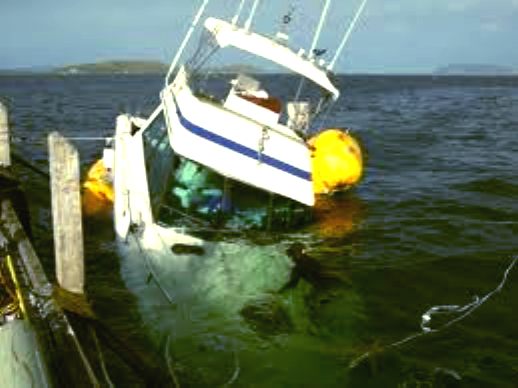

Fleet
operators might reduce insurance costs if their ships have
autonomous
capability, which system promises safer
seas.
|







